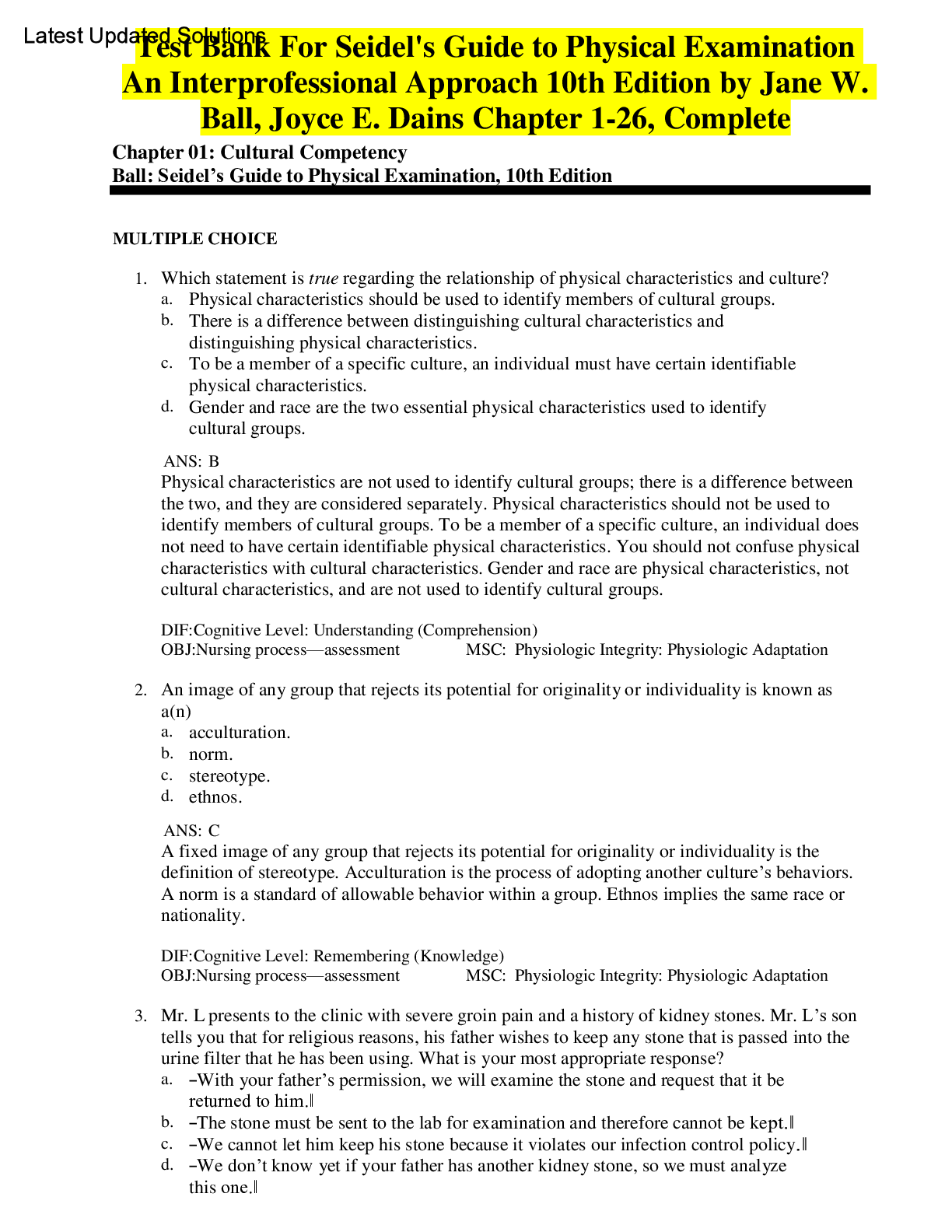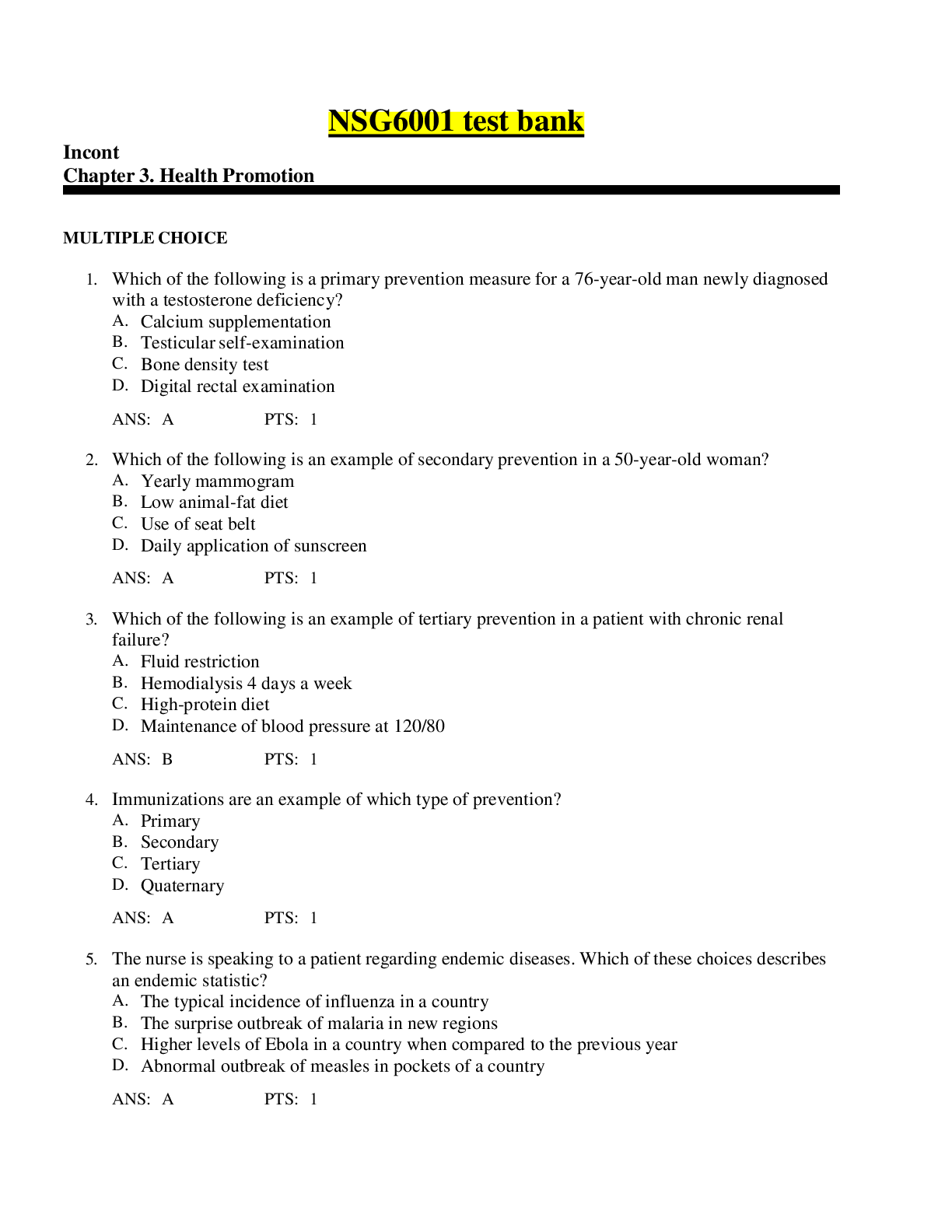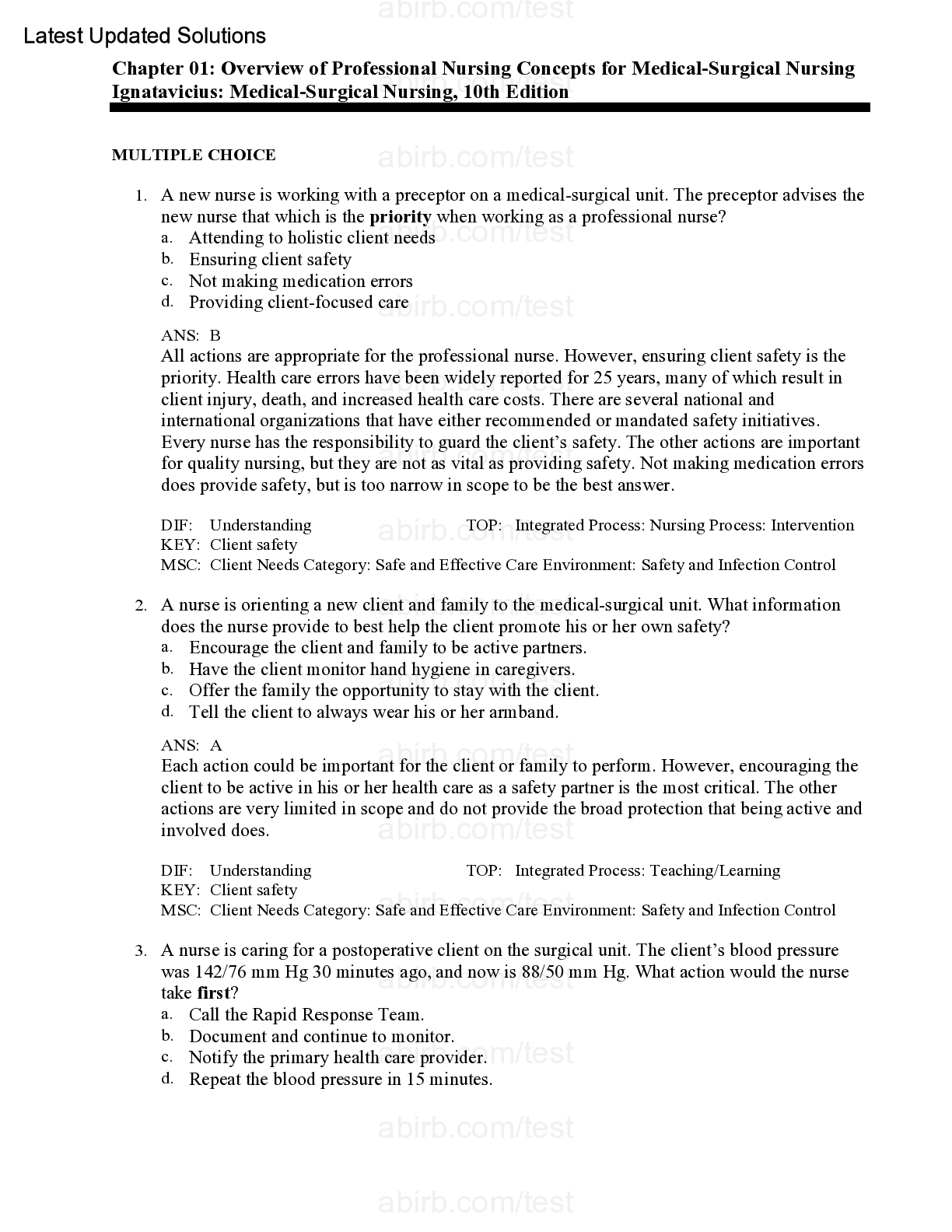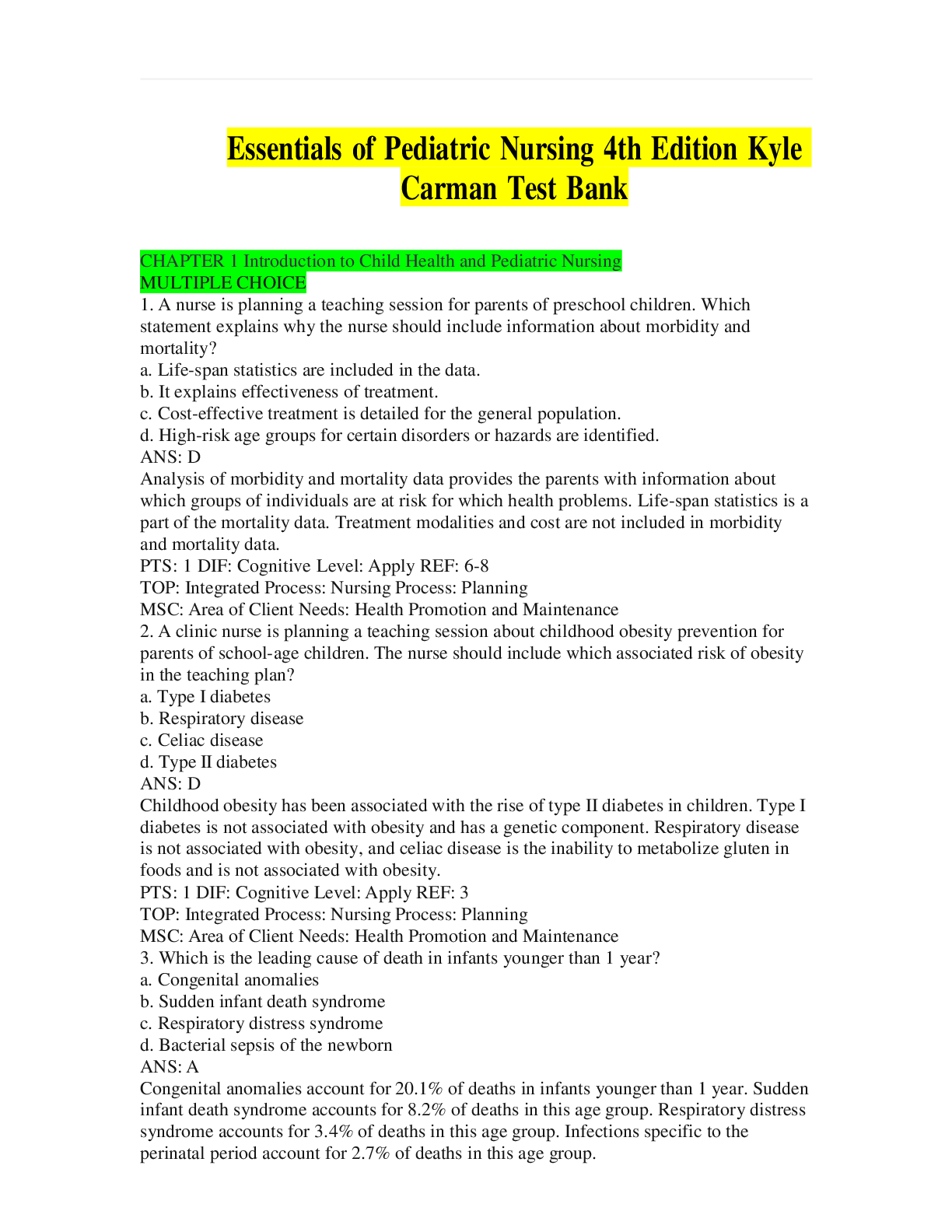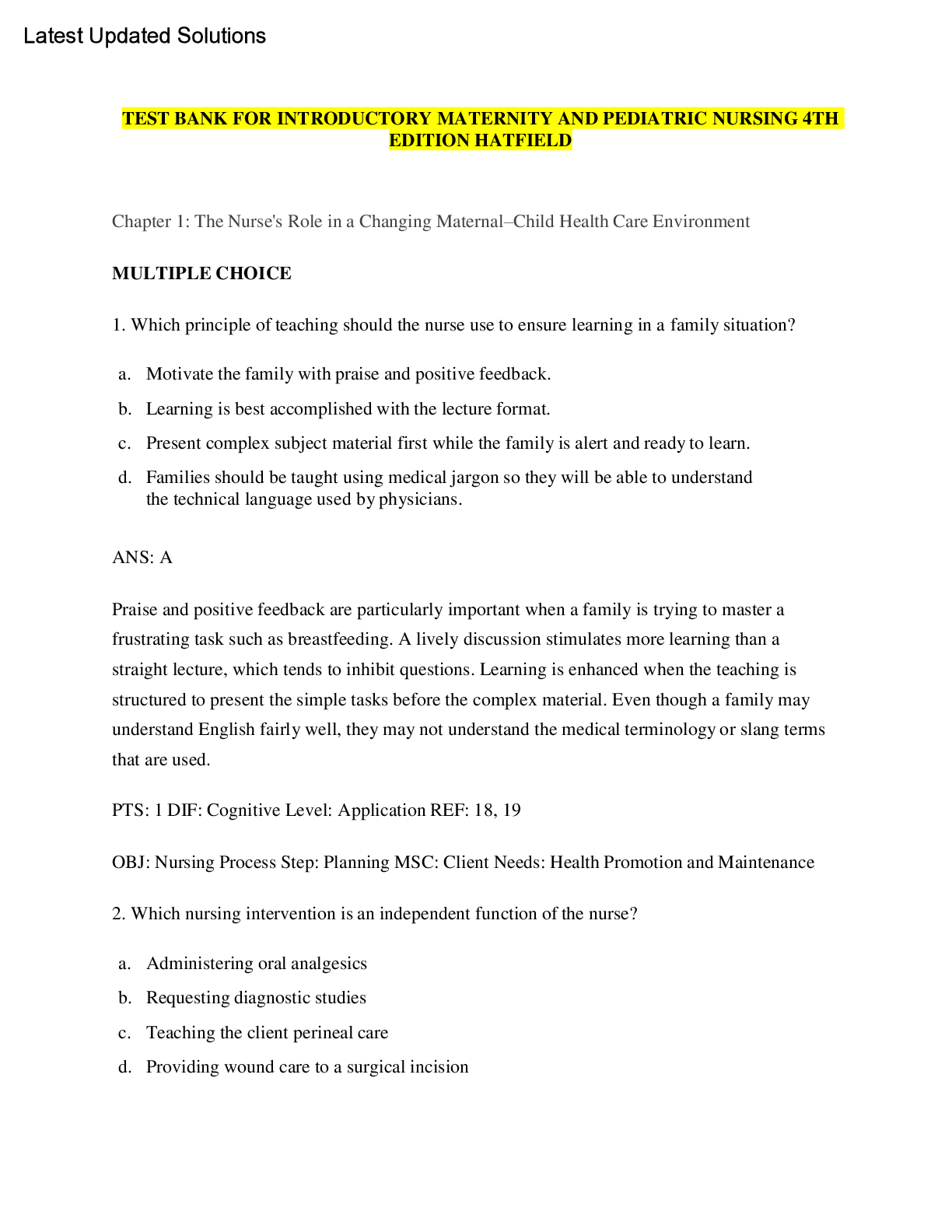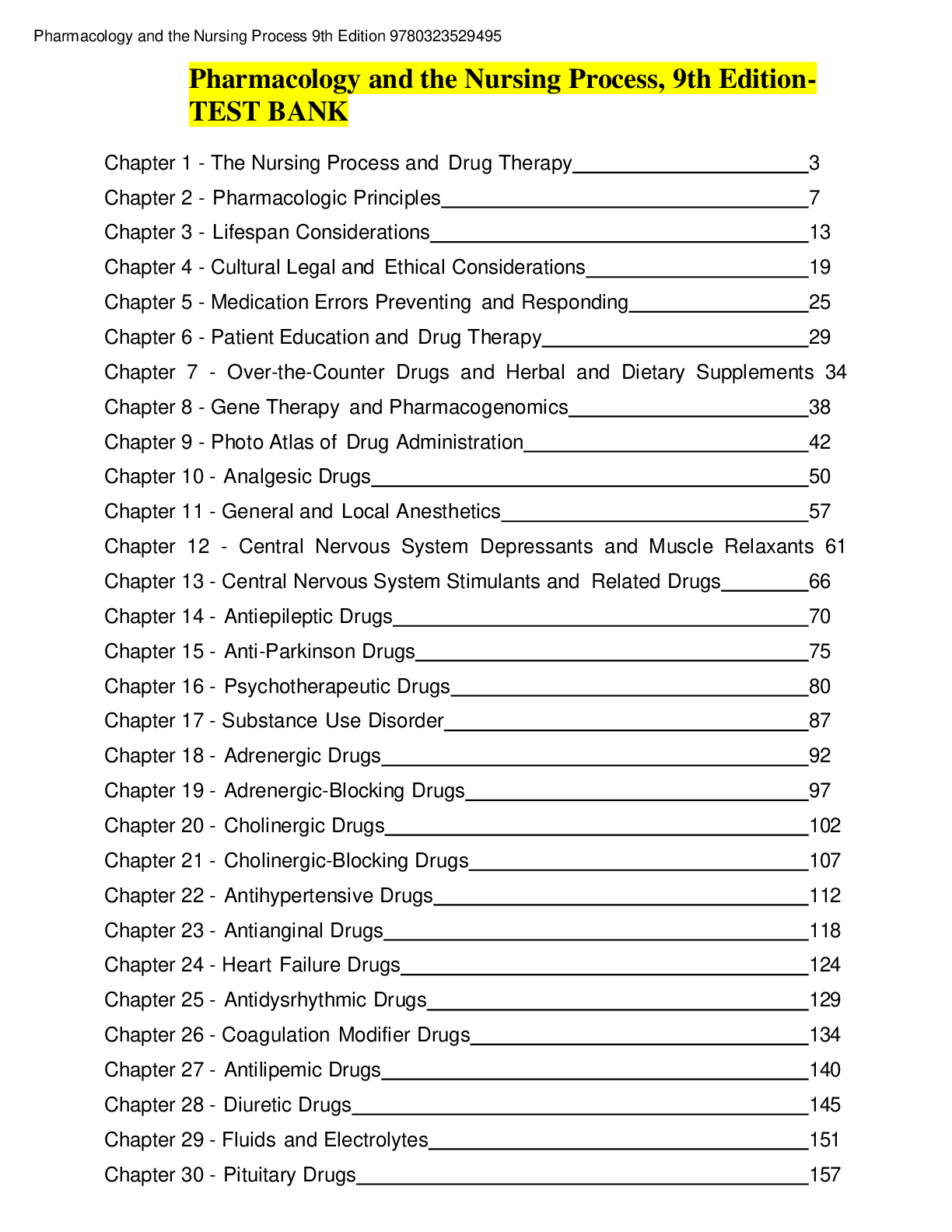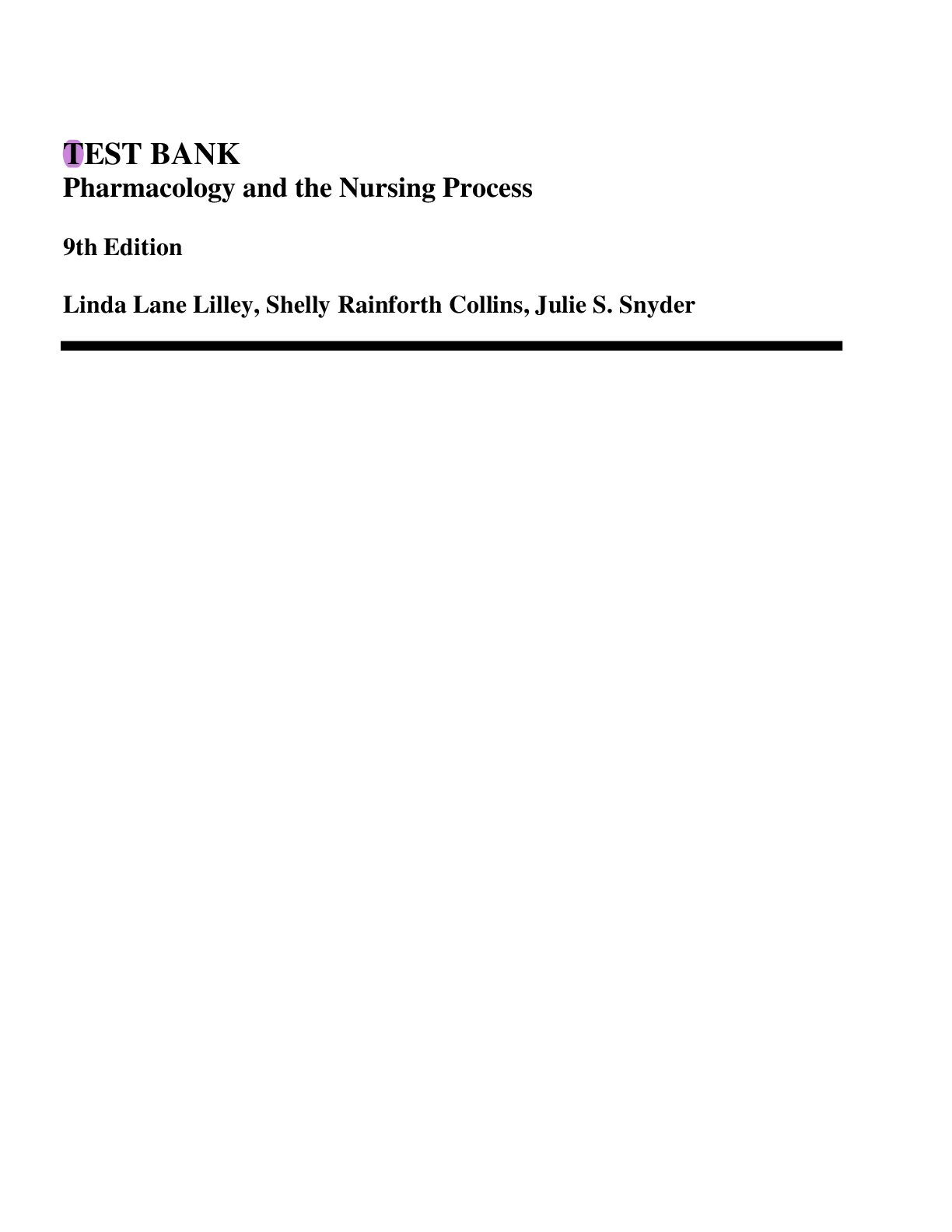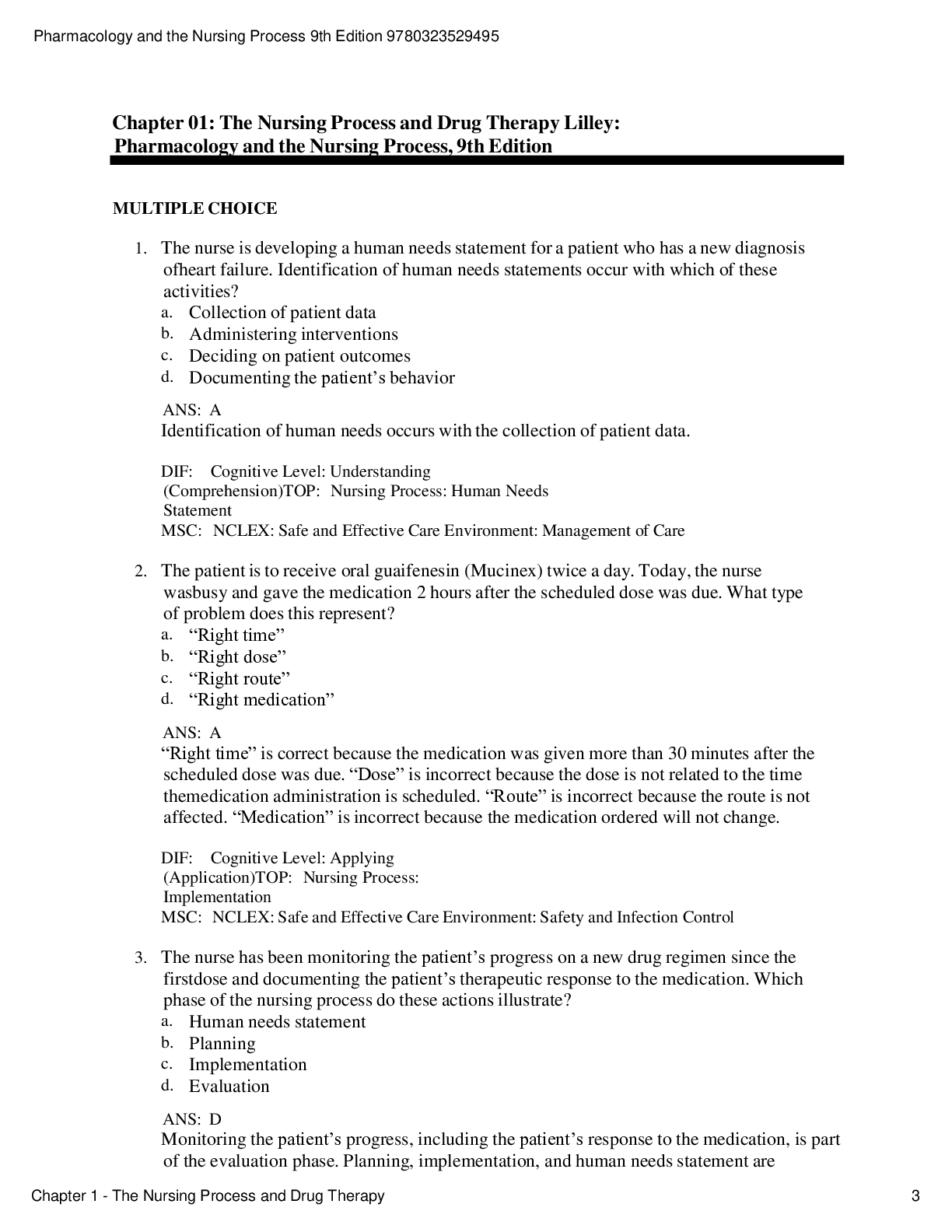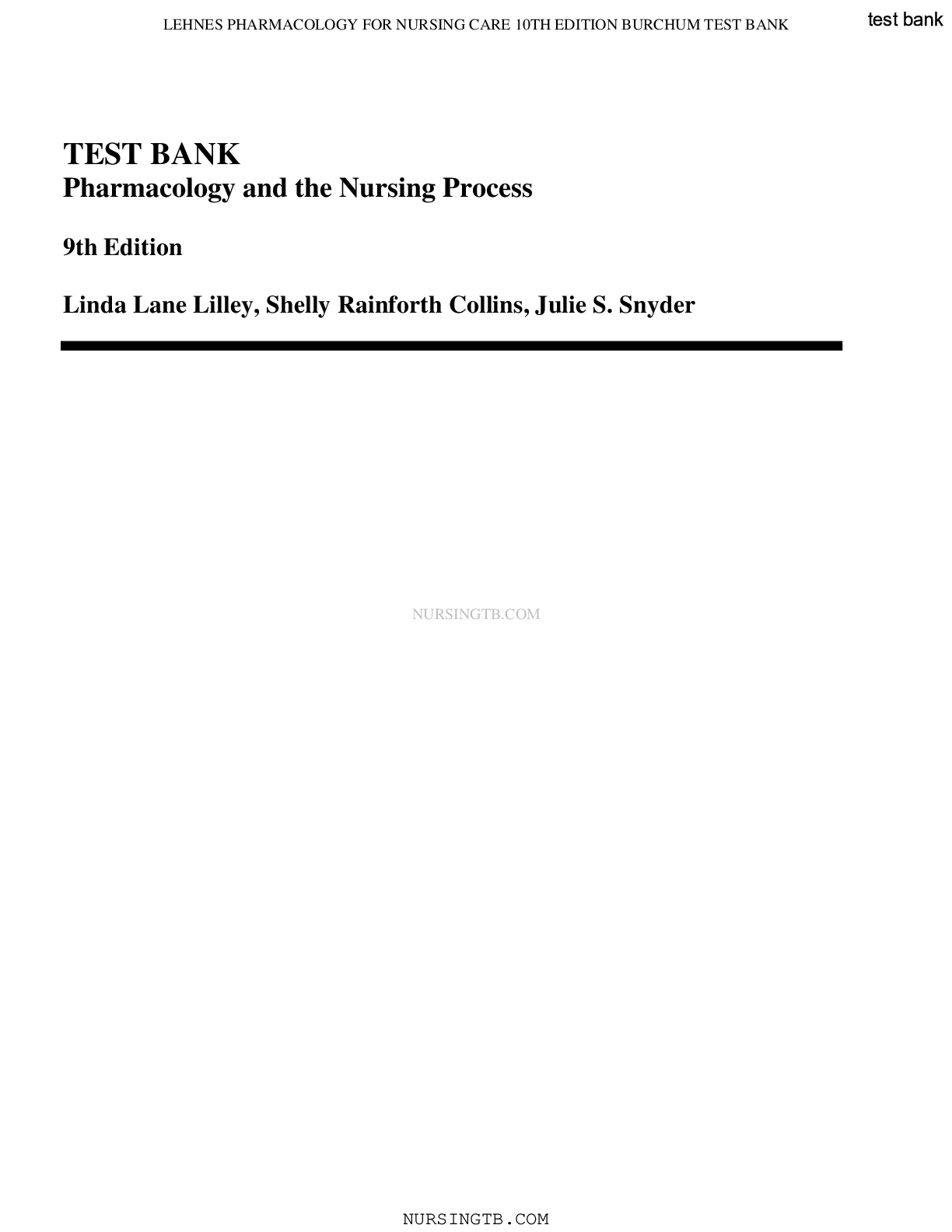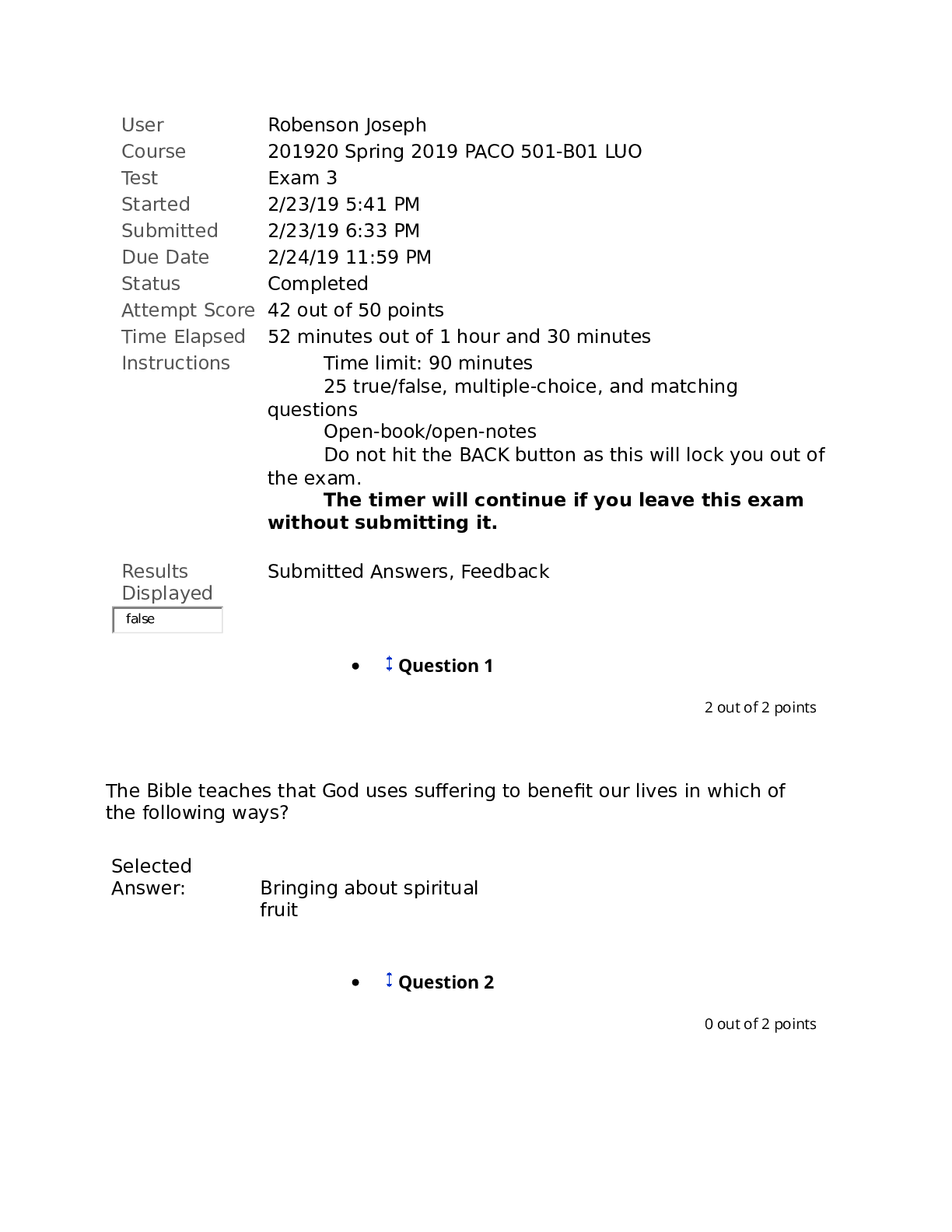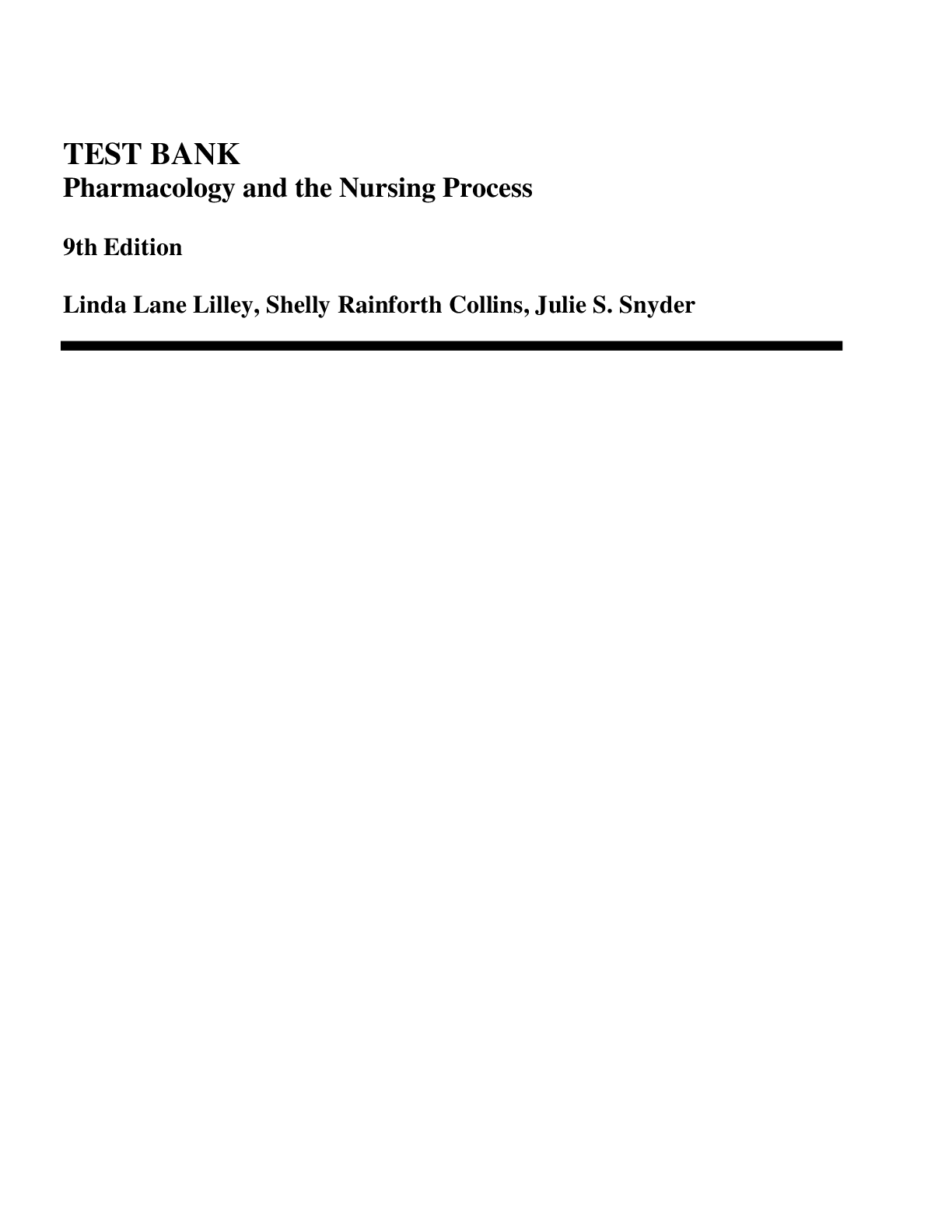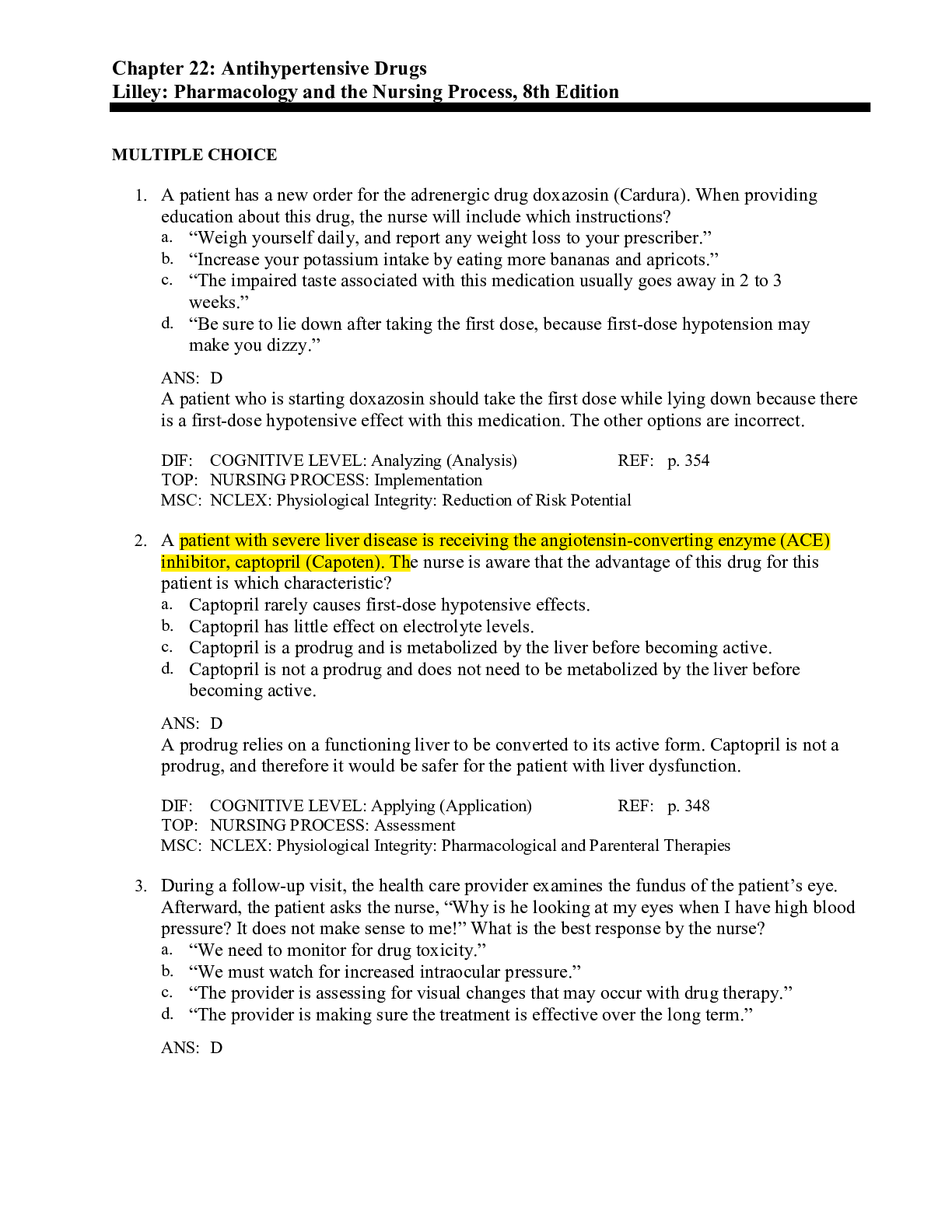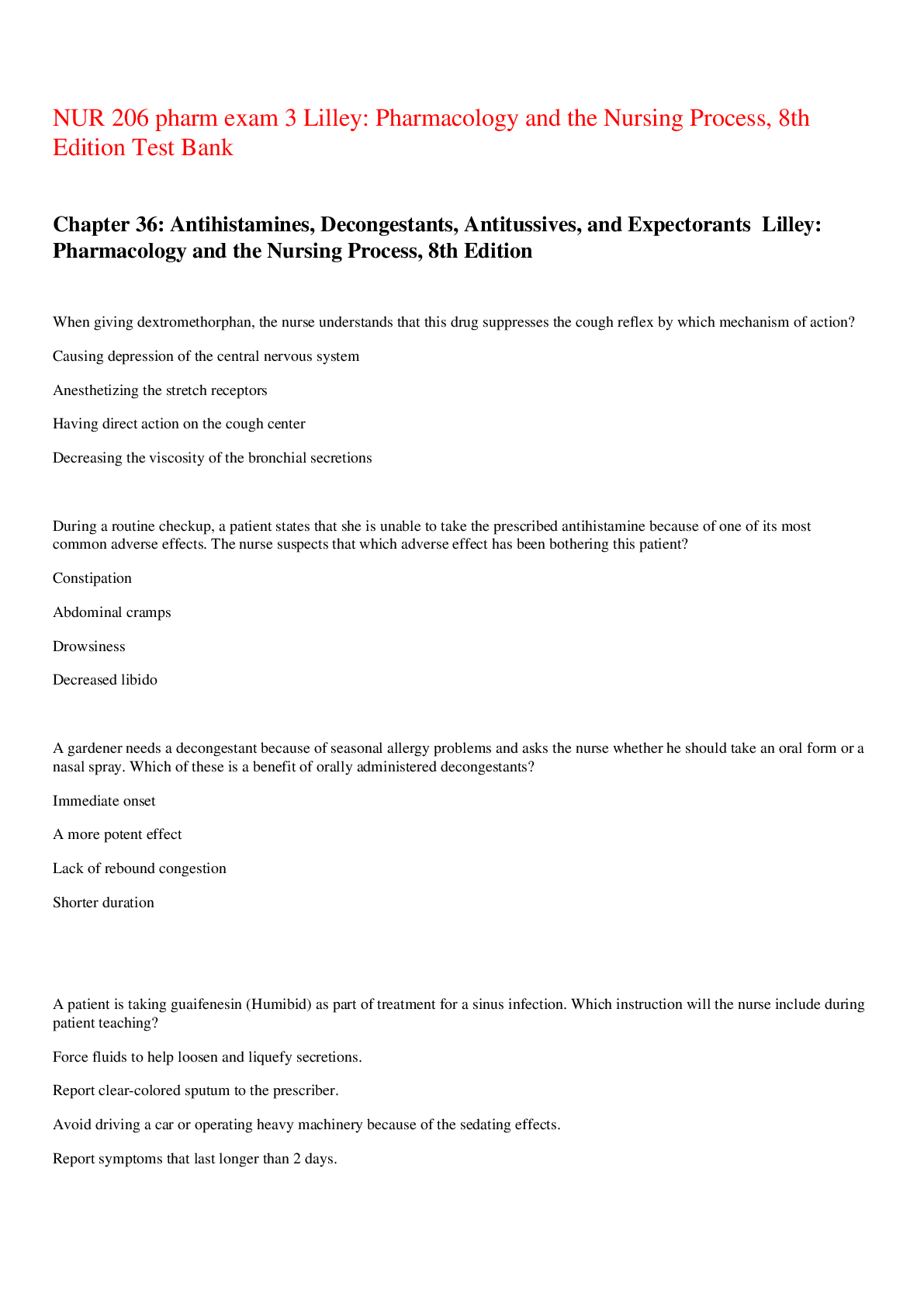Pharmacology and the Nursing Process, 9th Edition-TEST BANK ANSWERED
Document Content and Description Below
Chapter 01: The Nursing Process and Drug Therapy Lilley: Pharmacology and the Nursing Process, 9th Edition MULTIPLE CHOICE 1. The nurse is developing a human needs statement for a patient who... has a new diagnosis of heart failure. Identification of human needs statements occur with which of these activities? a. Collection of patient data b. Administering interventions c. Deciding on patient outcomes d. Documenting the patient’s behavior ANS: A Identification of human needs occurs with the collection of patient data. DIF: Cognitive Level: Understanding (Comprehension) TOP: Nursing Process: Human Needs Statement MSC: NCLEX: Safe and Effective Care Environment: Management of Care 2. The patient is to receive oral guaifenesin (Mucinex) twice a day. Today, the nurse was busy and gave the medication 2 hours after the scheduled dose was due. What type of problem does this represent? a. “Right time” b. “Right dose” c. “Right route” d. “Right medication” ANS: A “Right time” is correct because the medication was given more than 30 minutes after the scheduled dose was due. “Dose” is incorrect because the dose is not related to the time the medication administration is scheduled. “Route” is incorrect because the route is not affected. “Medication” is incorrect because the medication ordered will not change. DIF: Cognitive Level: Applying (Application) TOP: Nursing Process: Implementation MSC: NCLEX: Safe and Effective Care Environment: Safety and Infection Control 3. The nurse has been monitoring the patient’s progress on a new drug regimen since the first dose and documenting the patient’s therapeutic response to the medication. Which phase of the nursing process do these actions illustrate? a. Human needs statement b. Planning c. Implementation d. Evaluation ANS: D Monitoring the patient’s progress, including the patient’s response to the medication, is part of the evaluation phase. Planning, implementation, and human needs statement are not illustrated by this example. DIF: Cognitive Level: Understanding (Comprehension) TOP: Nursing Process: Evaluation MSC: NCLEX: Safe and Effective Care Environment: Management of Care 4. The nurse is assigned to a patient who is newly diagnosed with type 1 diabetes mellitus. Which statement best illustrates an outcome criterion for this patient? a. The patient will follow instructions. b. The patient will not experience complications. c. The patient will adhere to the new insulin treatment regimen. d. The patient will demonstrate correct blood glucose testing technique. ANS: D “Demonstrating correct blood glucose testing technique” is a specific and measurable outcome criterion. “Following instructions” and “not experiencing complications” are not specific criteria. “Adhering to new regimen” would be difficult to measure. DIF: Cognitive Level: Applying (Application) TOP: Nursing Process: Planning MSC: NCLEX: Safe and Effective Care Environment: Management of Care 5. Which activity best reflects the implementation phase of the nursing process for the patient who is newly diagnosed with hypertension? a. Providing education on keeping a journal of blood pressure readings b. Setting goals and outcome criteria with the patient’s input c. Recording a drug history regarding over-the-counter medications used at home d. Formulating human needs statements regarding insufficient knowledge related to the new treatment regimen ANS: A Education is an intervention that occurs during the implementation phase. Setting goals and outcomes reflects the planning phase. Recording a drug history reflects the assessment phase. Formulating human needs statements reflects analysis of data as part of planning. DIF: Cognitive Level: Applying (Application) TOP: Nursing Process: Implementation MSC: NCLEX: Safe and Effective Care Environment: Management of Care 6. The medication order reads, “Give ondansetron (Zofran) 4 mg, 30 minutes before beginning chemotherapy to prevent nausea.” The nurse notes that the route is missing from the order. What is the nurse’s best action? a. Give the medication intravenously because the patient might vomit. b. Give the medication orally because the tablets are available in 4-mg doses. c. Contact the prescriber to clarify the route of the medication ordered. d. Hold the medication until the prescriber returns to make rounds. ANS: C A complete medication order includes the route of administration. If a medication order does not include the route, the nurse must ask the prescriber to clarify it. The intravenous and oral routes are not interchangeable. Holding the medication until the prescriber returns would mean that the patient would not receive a needed medication. [Show More]
Last updated: 11 months ago
Preview 1 out of 309 pages

Reviews( 0 )
Document information
Connected school, study & course
About the document
Uploaded On
Aug 24, 2021
Number of pages
309
Written in
Additional information
This document has been written for:
Uploaded
Aug 24, 2021
Downloads
0
Views
38

.png)
.png)
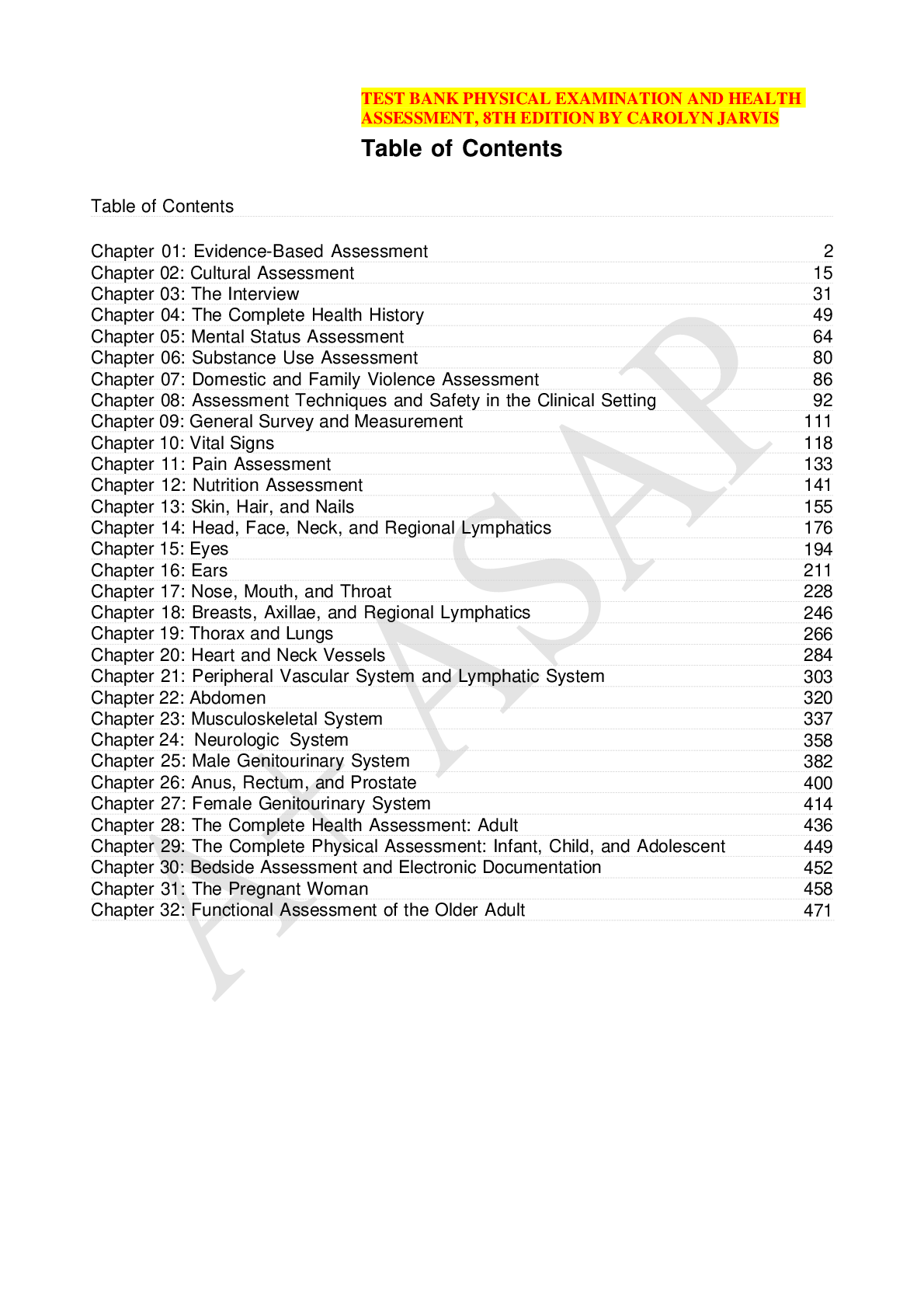
.png)
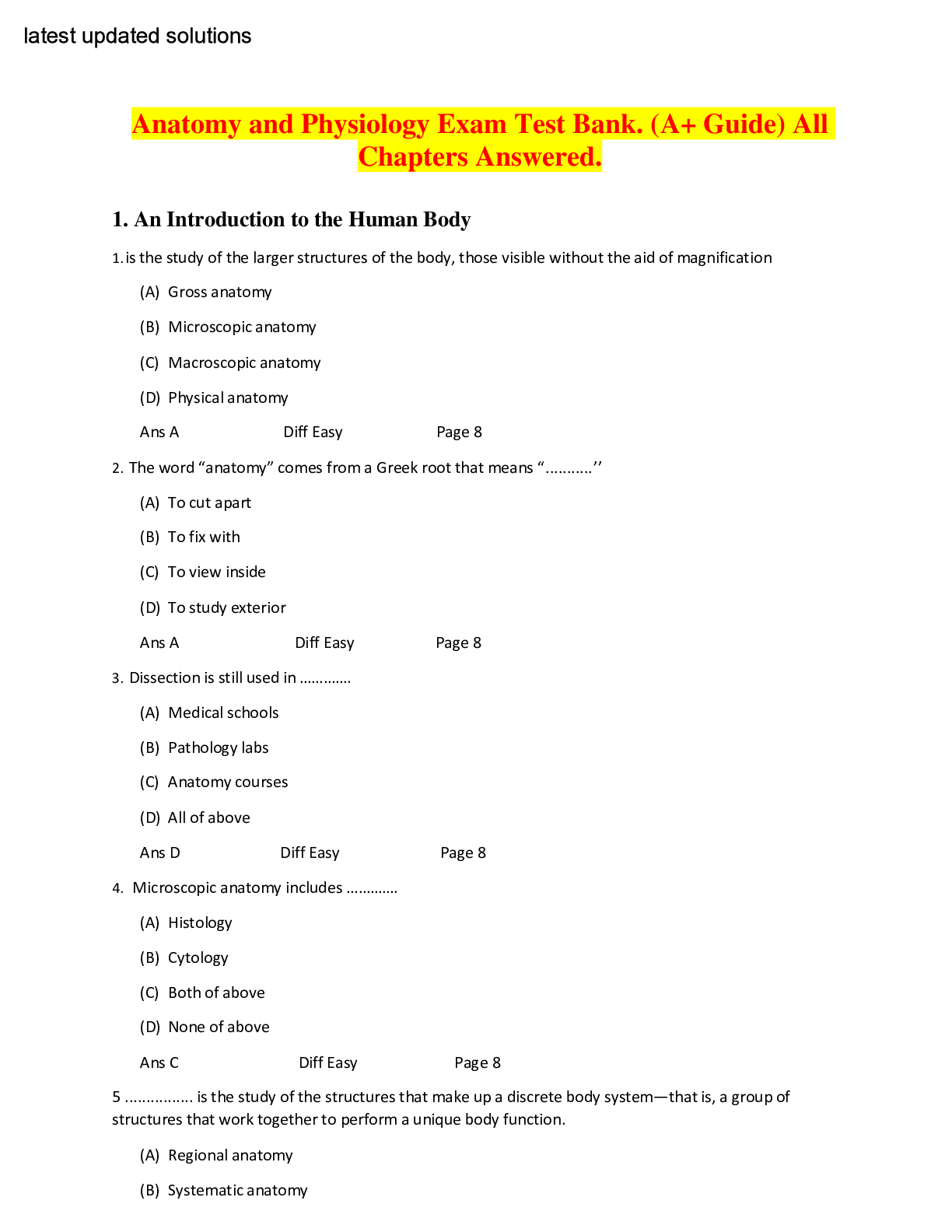
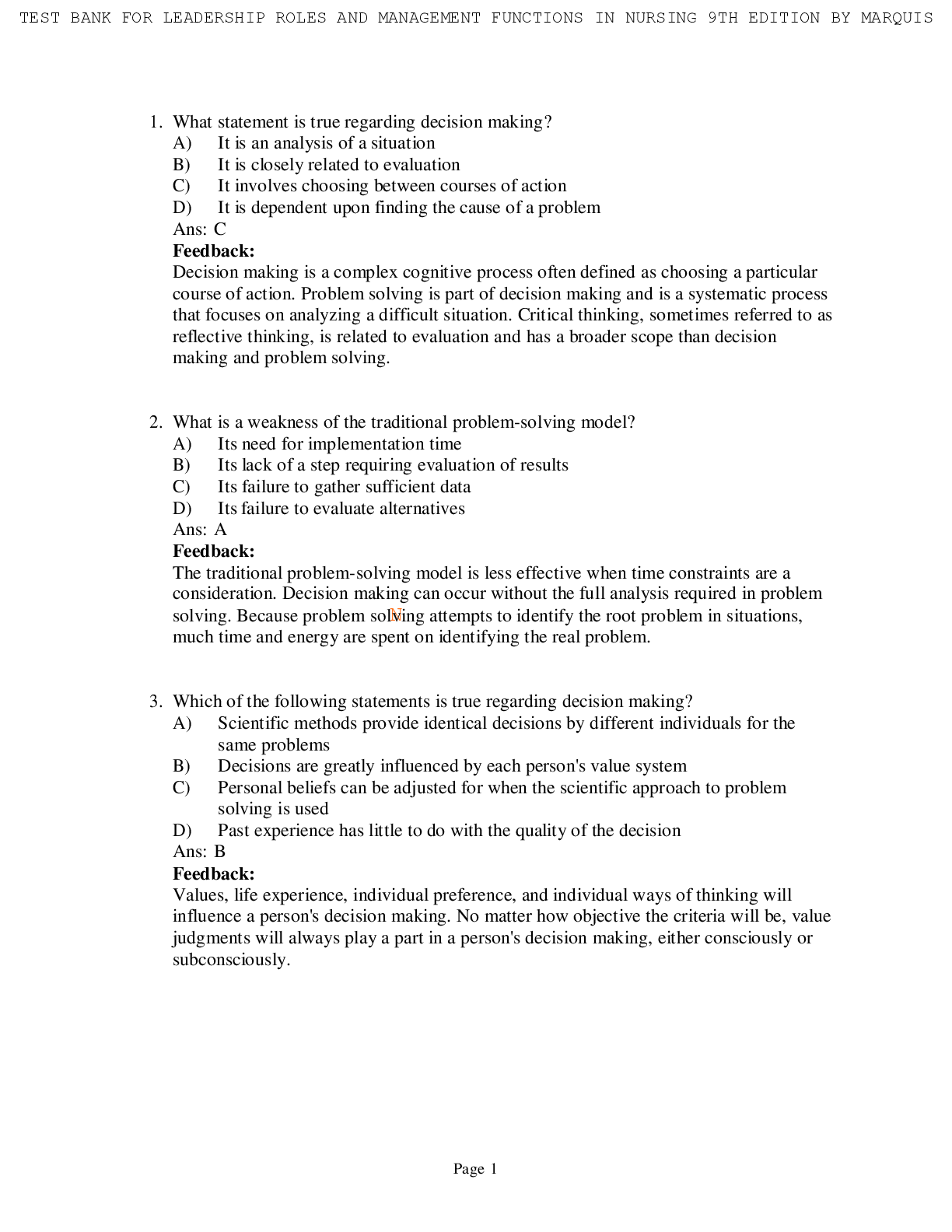
.png)
.png)
